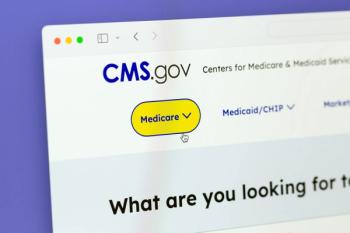
Payers seek more comparative research documenting value and affordability of high-cost therapies
While scientists and biomedical researchers at the recent meeting of the American Society of Clinical Oncology (ASCO) applauded encouraging data on dozens of breakthrough cancer therapies, analysts pondered strategies for convincing payers to cover the new life-saving drugs.
While scientists and biomedical researchers at the recent meeting of the American Society of Clinical Oncology (ASCO) applauded encouraging data on dozens of breakthrough cancer therapies, analysts pondered strategies for convincing payers to cover the new life-saving drugs. More than 900 cancer therapies are under development, according to the Pharmaceutical Research and Manufacturers of America (PhRMA), and FDA anticipates approximately 20 submissions for new cancer medicines this year. Not all the reviewed products will make it to market, but those that do will have to demonstrate their value over comparable treatments to achieve coverage. Private health plans and payers are demanding more evidence from pharmaceutical marketers to support reimbursement for new and old therapies, while striving to reduce their pharmacy expenditures by driving generic prescribing and imposing high copays on patients.
DOCUMENTING OUTCOMES
How and when pharma companies should develop comparative effectiveness information on new drugs was the focus of the annual meeting of the International Society for Pharmacoeconomics and Outcomes Research (ISPOR) in Washington last month. With $50,000 to $100,000 price tags on targeted therapies for cancer, rheumatoid arthritis, multiple sclerosis, and other critical diseases, payers are looking to limit prescribing to those patients most likely to benefit based on biomarkers and diagnostic tests. In addition to implementing step therapy, prior authorization and tiered formularies to control drug outlays, payers seek outcomes studies, comparative effectiveness research (CER), and targeted clinical trial designs to document product value.
So far, payers and insurers in the United States have been willing to cover costly new cancer therapies because the number is relatively small and many target small patient populations, explained Thomas Bramley, vice president of Xcenda, the consulting arm of AmerisourceBergen. But now plans are looking for more convincing cost-effectiveness data and budget impact models, along with companion diagnostics able to direct treatment to those patients most likely to respond. Drug "affordability" has taken hold, as payers realize that there are limits on patient acceptance of high copays.
One development is that pharmaceutical companies are more open to consultation and collaborating with payers and health plans to avoid launching new products that will be rejected in the market. Sean Tunis, president of the Center for Medical Technology Policy, described the Green Park Collaborative, which hopes to develop guidance on effective research designs to meet the needs of payers and HTA agencies, starting with an Alzheimer's disease pilot. Newell McElwee, executive director of US Outcomes Research at Merck, agreed that industry is talking more to payers about what evidence they require for a positive reimbursement decision, adding that collaboration is preferable to obtaining 10 different research recommendations from 10 different payers.
Yet, some analysts questioned whether all the budget impact analysis from pharma companies is useful in deciding reimbursement. There's skepticism about such calculations on both sides, and payers seem to prefer models for how patients do long-term on a treatment, noted Kathy Hughes, vice president, Health Economics and Outcomes at Avalere Health. Marketers feel that a budget analysis is necessary to gain market access, but recognize that its usefulness may be limited to certain types of drugs and therapeutic areas.
Payers can offer helpful advice to drug developers on designing clinical trials to produce useful CER-and sometimes to support a company's decision to kill a development program not likely to yield a marketable product. However, there are concerns that discussions on research methods and outcomes claims between drug companies and payers prior to product approval could violate off-label marketing restrictions. And uncertainty over the rules governing how pharma marketers can present outcomes information that touches on off-label uses to payers and formulary committees has put pressure on FDA to clarify its policy.
COMPARING DATA
A perennial issue is whether FDA and other regulators can make it easier to bring new drugs to market by encouraging the inclusion of outcomes assessments in pre-approval trials. The opening session at ISPOR addressed whether the current regulatory paradigm should be modified to facilitate assessment of patients with co-morbidities, to compare alternative therapies and to assess outcomes relevant to patients in phase 3 studies. Tunis acknowledged that trials with active comparators are more expensive and take longer, and that many quality measures are not well validated. Former FDA Commissioner Mark McClellan, MD, PhD, now at the Brookings Institution, noted that rising costs and new healthcare delivery systems support CER, but that the legal standard for new drug approval remains safety and effectiveness, not comparative effectiveness. Trials can be modified to provide additional information, said FDA Senior Advisor Vicki Seyfert-Margolis, but FDA requires adequate and well-controlled studies to approve new drugs.
Variations in results from randomized trials and observational studies were further explored at the annual CER symposium sponsored by the Agency for Healthcare Research and Quality (AHRQ). Analysts described the differences between efficacy and effectiveness studies for evaluating healthcare delivery systems, understanding responses of diverse populations and variable care settings, and comparing different treatment modalities and interventions.
Assistance in improving the quality of CER may come from the new Methods Report from the Patient-Centered Outcomes Research Institute (PCORI). A preliminary draft, which is scheduled to be finalized in November, outlines 60 standards to guide researchers in assessing heterogeneity, handling missing data, accessing data networks, utilizing adaptive strategies, establishing data registries, and assessing diagnostic tests.
A goal for William Crown, group president, Health Economics & Outcomes Research and Late Phase Research, UnitedHealthcare's OPTUMInsight and ISPOR president-elect, is to further refine CER methods so that the conclusions from observational studies are more reliable. "We need to raise the sophistication of the discourse surrounding randomization and observation," he said.
PART D SUCCESS
Dr McClellan proposed at ISPOR that changes in healthcare delivery systems through ACOs and other models can help measure quality and costs to achieve savings and improve outcomes, as experienced with the Medicare Part D drug benefit. A recent report from the Kaiser Family Foundation (KFF) documents how government outlays for Part D have been about 30% lower than originally projected by the Congressional Budget Office, during a period when overall Medicare spending has skyrocketed. The savings arise from a number of factors, said analyst Jack Hoadley of Georgetown University's Health Policy Institute at a KFF briefing: lower enrollment in Part D than expected, a general slowdown in total spending on prescription drugs, fewer new drugs coming to market, and, most notably, a huge rise in generic drug prescribing.
Karen Ignagni, president and CEO of America's Health Insurance Plans (AHIP), credited the savings to the ability of Part D plans to apply a range of medication management tools to drug utilization, including tiered formularies that encourage patients and prescribers to switch to generics. Even economist Marilyn Moon, a well-known advocate for consumer protection in healthcare, acknowledged that private plans have been able to use financial incentives to push beneficiaries into generics-something that would be hard for the federal government to do.
But Moon noted that Part D plans have "a very good deal" because the doughnut hole structure relieves insurers from covering very high-cost patients. The program's reinsurance system, plus subsidies for seniors also on Medicaid, reduces the pressure on plans to manage spending on high-cost medicines. That may change, though, if the emergence of more pricey critical therapies raises overall costs for Part D and other public and private drug benefits.
A broader policy issue is whether Part D's success in managing costs and expanding access provides a model for shifting the entire Medicare program to a "premium support" system, as advocated by Republicans. Instead of the current fee-for-service, government-run health program, conservatives want to provide seniors with vouchers to assist in purchasing private insurance from multiple plans.
But market competition may not be responsible for lower Part D spending, notes Hoadley; instead, unrealistically high-cost estimates may be more responsible for savings estimates than effective drug management activities. Limited plan switching by Part D enrollees, moreover, indicates that competitors are not luring beneficiaries with better deals.
Yet former Health and Human Services Secretary Mike Leavitt, now health advisor to Republican presidential hopeful Mitt Romney, regards Part D as a model for a reformed Medicare system. Conservative James Carpetta credits Part D's success on the ability of plans to offer many options, noting that reasonable government oversight of the program, with rules governing plan bidding and basic drug coverage, creates an effective program with flexibility to change over time.
Ms Wechsler is a Washington-based reporter specializing in federal and state healthcare issues.
Newsletter
Get the latest industry news, event updates, and more from Managed healthcare Executive.




















































